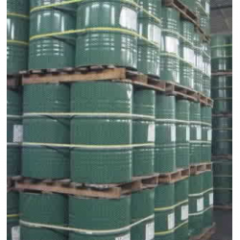Diethanolamine
| Infobox on Diethanolamine | |
|---|---|
| Example of Diethanolamine |  |
| Facts | |
| Origin | - |
| Stowage factor (in m3/t) | - |
| Humidity / moisture | - |
| Ventilation | - |
| Risk factors | See text |
Diethanolamine
Description
Diethanolamine, often abbreviated as DEA, is an organic compound with the formula HN(CH2CH2OH)2. This colorless liquid is polyfunctional, being a secondary amine and a diol. Like other organic amines, diethanolamine acts as a weak base. Reflecting the hydrophilic character of the alcohol groups, DEA is soluble in water, and is even hygroscopic. Amides prepared from DEA are often also hydrophilic.
Application
DEA is used as a surfactant and a corrosion inhibitor. It is used to remove hydrogen sulfide and carbon dioxide from natural gas.
In oil refineries, a DEA in water solution is commonly used to remove hydrogen sulfide from various process gases. It has an advantage over a similar amine ethanolamine in that a higher concentration may be used for the same corrosion potential. This allows refiners to scrub hydrogen sulfide at a lower circulating amine rate with less overall energy usage.
DEA is a chemical feedstock used in the production of morpholine.
Liquid detergents for emulsion paints, cutting oils, shampoos, cleaners, and polishes, textile specialties; absorbent for acid gases; chemical intermediate for resins, plasticisers, etc.; solubilizing 2,4D; humectant; dispersing agent.
Shipment / Storage
| Density | 1.069 g/cm3 |
| Melting point (°C) | 27-30°C |
| Boiling point (°C) | 268.389°C at 760 mmHg |
| Flashpoint (°C) | 137.778°C |
Risk factors
Toxic. TLV: 3 ppm in air.
For overseas carriage aspects of Chemicals, the readers are recommended to acquire or have access to a good chemical dictionary, and a copy of the International Maritime Dangerous Goods (IMDG) Code, issued by the International Maritime Organisation. Also consult the applicable MSDS sheet.
Environmentally hazardous substance.
See also: http://www.chemicalland21.com/industrialchem/organic/DIETHANOLAMINE.htm











